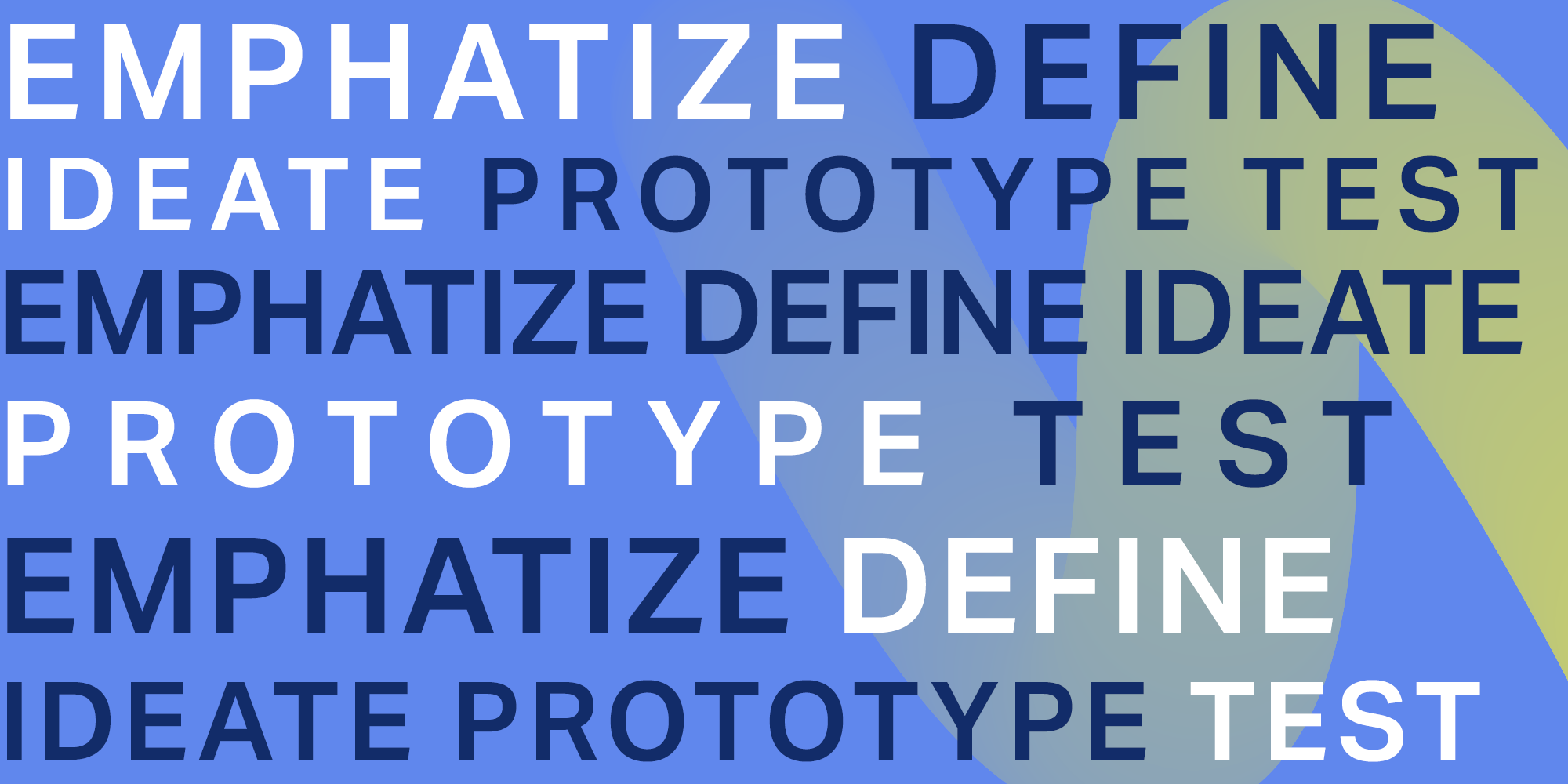The Process

Different versions of the process build on varying terms and illustrations. We follow the terminology and approach of the Stanford dSchool, which has been very influential in developing and popularising design thinking. The process is iterative, which is just a fancy word meaning that it gets repeated, and it is not linear. Teams can go back and forth through the stages (which are often also called phases or steps).
Stage 1: Empathize
The goal is to gain an empathetic understanding of the problem at hand, typically through user research. This phase involves understanding the user, especially regarding their needs and tasks, and observing them in the field. It is vital that observation take place in the user’s real environment. Try to be open-minded about the problem at hand. Your personal assumptions should not be an influencing factor, for example, when speaking to potential users. A second element of this phase is scoping the creative framework. “Why” questions will broaden the creative framework, whereas “how” questions will limit them.
Stage 2: Define
This phase aims to get everyone in the team “on the same page” through sharing, comparing, and weighting the different findings that were gathered to arrive at a shared point of view. The personas from the empathize phase are challenged or developed further. Analyse the initial observations to identify the core problems and make these explicit by formulating specific problem statements.
Stage 3: Ideate
Now that the problem is clearer, solutions start coming into play. The goal is to create as many ideas as possible in the early stage and then to pick out the most promising ones, after several stages of clustering, combining, and sorting out. This phase uses a variety of creativity techniques such as brainstorming and sketching.
Stage 4: Prototype and Test
Prototypes are a quick, cheap, and risk-free approach to testing ideas and solutions with prospective users and experts. Don’t let the word “prototype” scare you. We are not speaking about functional and detailed models. The goal is to make the ideas come to life, which can be achieved through mock-ups or rudimentary prototypes made from craft materials, paper, etc. Rough and cheap prototypes aid the goal of gaining as much insight as possible early in the development process.
Every prototype should be tested with users. This phase will take many iterations. Prototypes and their testing provide continuous learning opportunities up until a point where the team – and the users – love the idea. If they don’t: change it or leave it.
The design thinking process ends with a proven concept of a solution, not with the final product or service.